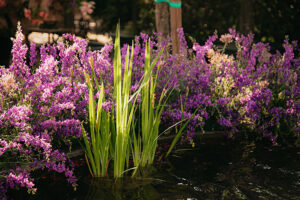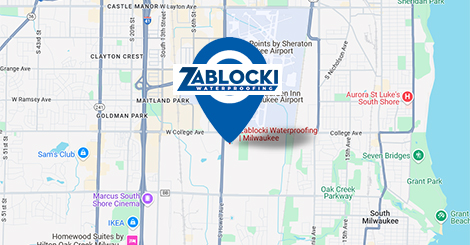If you’re experiencing drainage problems with your lawn, you’re not alone. In fact, these problems are quite common in the Milwaukee area, especially after we experience a significant amount of rainfall. Luckily, there are a number of solutions that can help solve your specific drainage issue.
We are Zablocki Waterproofing, proudly providing expert basement waterproofing and basement repair services to the greater Milwaukee community. In this blog post, we will discuss five ways to improve your lawn drainage and prevent water from pooling in unwanted areas. We’ll also talk about the dangers of a poorly-draining lawn and some of the most common drainage problems homeowners face. So if you’re ready to get your lawn back on track, keep reading!
Why Lawn Drainage Problems Happen
There are a number of reasons why your lawn might be experiencing drainage problems. One of the most common reasons is simply because of our climate here in Wisconsin. We get a lot of rain, snow, and ice throughout the year, which can lead to pooling and flooding in certain areas of your yard.
Another reason why lawn drainage problems might occur is due to the type of soil you have. If your soil doesn’t drain well or is very compacted, it can cause water to pool on the surface instead of seeping down into the ground. This is a common problem in newer developments where the soil has been heavily disturbed during construction.
The Dangers of a Poorly-draining Lawn
A lawn with poor drainage can cause a number of problems, both for your yard and your home. First, standing water is a breeding ground for mosquitoes and other pests. In addition, standing water can kill your grass and other plants, leaving you with bald patches in your lawn.
Poor drainage can also lead to flooding and water damage in your home. If water is allowed to pool around your foundation, it can seep into your basement or crawl space and cause serious moisture problems. In extreme cases, this can even lead to foundation failure. That’s why it’s so important to address drainage issues as soon as you notice them.
Common Lawn Drainage Problems and Their Solutions
Now that we’ve talked about some of the reasons why lawn drainage problems occur, let’s discuss some common problems and their solutions.
Problem: Water pooling around a patio, sidewalk, or driveway
If you have water pooling around your hardscapes, it’s likely due to poor grading. When your yard is graded properly, water should flow away from these areas and into a drainage ditch or storm sewer. If the grade around your patio, sidewalk, or driveway is too flat, however, water will pool in these areas instead.
Solution: Create a drainage swale
One way to solve this problem is to create a drainage swale. A swale is a shallow ditch that is used to redirect water away from hardscapes and other areas of your yard. You can create a swale by excavating a small trench around the perimeter of the affected area and lining it with gravel. Then, simply redirect the downspouts from your gutters away from the area and into the swale.
Problem: Overflowing gutters
If your gutters are overflowing, it’s likely because they’re clogged with leaves and other debris. When gutters become clogged, they can’t drain properly and water will spill over the sides, often causing pooling and flooding around your foundation.
Solution: Gutter & downspout cleaning
The best way to prevent this problem is to keep your gutters and downspouts clean and free of debris. You can do this yourself by using a ladder to remove leaves and other buildup from your gutters. However, if you’re not comfortable doing this, you can hire a professional gutter cleaning service to do it for you.
Problem: Poorly-draining soil
If your lawn is wet and soggy even after a light rain, it’s likely because your soil doesn’t drain well. This can be caused by a number of factors, including compaction, clay content, and the presence of organic matter.
Solution: Add organic material to improve absorption and runoff
One way to improve the drainage of your soil is to add organic matter. This can be done by top dressing your lawn with compost or adding mulch to your flower beds. This will help to improve the texture of your soil, making it more porous and allowing water to drain more easily.
Problem: Water pooling near your home’s foundation
If you have water pooling near your foundation, it’s likely due to improper grading. When your yard is graded properly, water should flow away from your foundation and into a drainage ditch or storm sewer. However, if the grade around your foundation is too flat, water will pool in this area and seep into your basement or crawl space.
Solution: Install drain tile
One way to solve this problem is to install drain tile around the perimeter of your foundation. Drain tile is a perforated pipe that is used to redirect water away from your foundation and into a drainage ditch or storm sewer. Learn more about drain tile with Zablocki Waterproofing.
Problem: Basement moisture after rainfall or snowmelt
If you have basement moisture after rainfall or snowmelt, it’s likely due to poor grading. When your yard is graded properly, water should flow away from your foundation and into a drainage ditch or storm sewer. However, if the grade around your foundation is too flat, water will pool in this area and seep into your basement or crawl space.
Solution: Regrade your soil
One way to solve this problem is to regrade the soil around your foundation. This can be done by excavating a trench around the perimeter of your foundation and adding gravel. Then, simply redirect the downspouts from your gutters away from the foundation and into the ditch.
By following these tips, you can improve the drainage in your yard and prevent water damage to your home. If you have any further questions about lawn drainage or basement waterproofing, please contact us at Zablocki Waterproofing. We would be happy to help you find the best solution for your specific problem. Thanks for reading!






